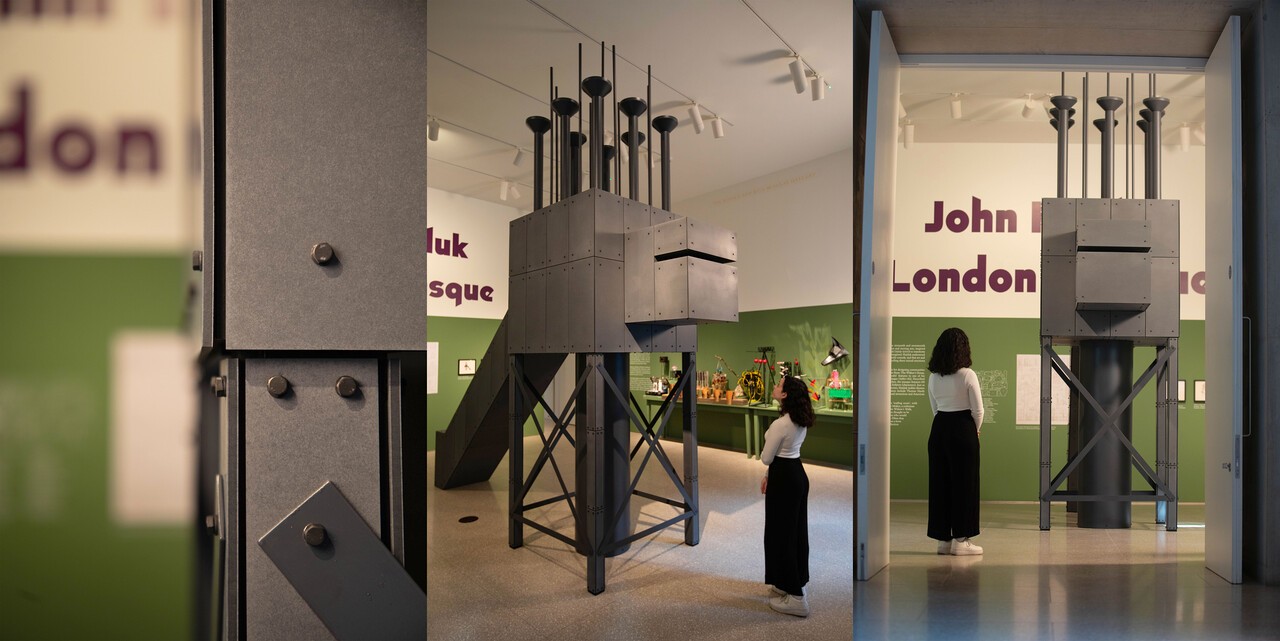John Hejduk
The Royal Academy is delighted to announce the opening of John Hejduk: London Masque, the first free installation in its new space for architecture. The installation features Hejduk’s design for the Widow’s House, one of 68 “objects” in his seminal Lancaster / Hanover Masque. The late American architect John Hejduk (1929–2000) believed that ideas were as important as buildings and that architecture had the power to make alternative worlds.
Vicky Richardson, the RA's Head of Architecture and Drue Heinz Curator, said: “London Masque has involved a huge cast of players including 100 students, tutors, designers and historians. It feels appropriate to bring John Hejduk’s practice and philosophy to the Royal Academy, which is just the sort of space for free expression that he thought the university should be. We hope visitors will enjoy discovering meaning, joy and poignancy in the Widow’s House.”
Hejduk used the format of masques—popular royal entertainments of the 16th and 17th centuries featuring fantastical costumes and moving sets—to transform the way architecture is taught and imagined. The Lancaster / Hanover Masque draws inspiration from an eclectic range of sources including the novels of Thomas Hardy, English fairground attractions and American agricultural buildings. Hejduk used allegorical stories and a large cast of characters to deal with themes of life, death, love and virtue. The Widow is one such character in the masque.
Hejduk described the Widow’s House as a “wailing room”, with the funnels on the roof made by “the Trombone-Maker, a craftsman of refined detail”. It refers to the Widow’s Walk, a feature of traditional New England houses thought to be built for the wives of whaling ships’ captains who would go up to these cupolas and watch the ships come in from sea. Often they did not come back. The Widow’s Walk was a form of surveillance and waiting, a place of reflection and anticipation.
This dark and mysterious tale contrasts with the comical, zoomorphic form of the structure with its four legs, head and tail. Hejduk saw that in life tragedy often sits alongside comedy, and that art and architecture give us a way of reconciling mixed emotions and conflicting ideas.
Hejduk dedicated his life to teaching which he saw as a social contract. As Professor and Dean of the Cooper Union’s Irwin S. Chanin School of Architecture in New York from 1975 until his death in 2000, he created extraordinary drawings and propositions to provoke and inspire his students. Mystery, poetry and paradox were intrinsic: he wanted students to work hard to interpret ideas in order to develop their own point of view. Hejduk said: “I believe that the University is one of the last places that protects and preserves freedom, therefore teaching is also a socio/political act, among other things.”
In the 1980s and 90s Hejduk encouraged students around the world to interpret the meaning in his drawings and to build his structures as a way of learning practical skills and working collaboratively. ‘London Masque’ was developed in collaboration with students from the Royal College of Art MA Interior Design programme led by tutor Steve Jensen. During the exhibition, a series of displays by students and young people will explore Hejduk’s Lancaster / Hanover Masque and the resulting models will be shown alongside the Widow’s House.
